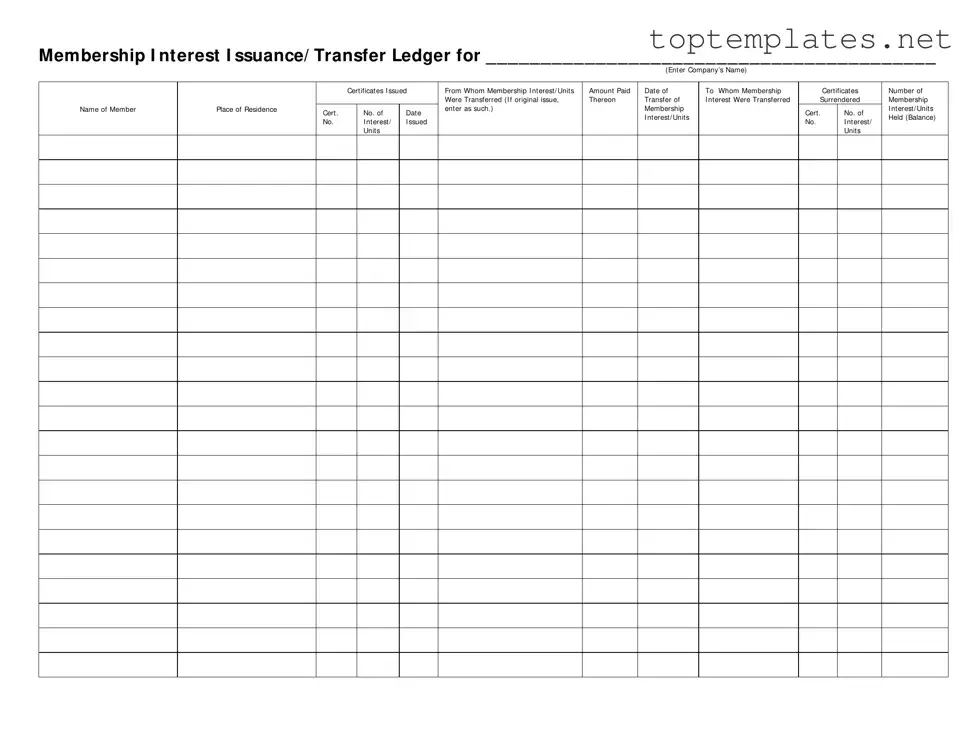What is a Membership Ledger form?
A Membership Ledger form is a document used by companies, particularly those structured as limited liability companies (LLCs), to keep track of the issuance and transfer of membership interests or units. This form records important details such as the names of members who have been issued or have transferred their interests, the amount paid for these interests, certificate numbers, dates of transactions, and the balance of interests held by each member.
Why is it important to maintain a Membership Ledger?
Maintaining a Membership Ledger is crucial for several reasons. It ensures accurate record-keeping of all transactions related to membership interests, helps in the management of the company’s capital structure, and facilitates the resolution of disputes among members regarding ownership. Additionally, it is a legal requirement for LLCs in many jurisdictions to keep updated records of membership interests for regulatory compliance and tax purposes.
Who should have access to the Membership Ledger?
Access to the Membership Ledger should be limited to authorized personnel only, such as members of the LLC, the company’s legal counsel, and accountants. It contains sensitive and potentially confidential information about the company’s members and their financial contributions. Proper access control ensures the protection of member privacy and secures the company’s financial information.
How often should the Membership Ledger be updated?
The Membership Ledger should be updated promptly after every transaction that affects membership interests or units. This includes issuances of new interests, transfers of existing interests among members, and any changes in the amount paid or in the balance of interests held. Regular updates ensure that the ledger accurately reflects the current ownership structure of the company.
Can membership interests be transferred between members?
Yes, membership interests can be transferred between members, subject to the terms outlined in the company’s operating agreement and applicable laws. The Membership Ledger form includes sections for documenting such transfers, including information about the transferring and receiving parties, the number of units transferred, and the related certificate numbers. It is important to update this document to reflect these changes accurately.
What happens if there are discrepancies in the Membership Ledger?
If discrepancies are found in the Membership Ledger, it is important to investigate and resolve them promptly. Discrepancies might include errors in the number of units issued, incorrect member information, or outdated records of transfers. Resolving these issues may require reviewing transaction documents, amending the ledger to correct inaccuracies, and possibly consulting legal counsel to ensure compliance with regulatory requirements and to protect the company's and its members' interests.
Is digital record-keeping of the Membership Ledger acceptable?
Yes, digital record-keeping of the Membership Ledger is generally acceptable and, in many cases, preferred due to its efficiency, ease of updating and accessing information, and reduced risk of physical damage or loss. However, it's vital to ensure that digital records are securely stored, regularly backed up, and accessible only to authorized personnel to protect against unauthorized access or data breaches.

